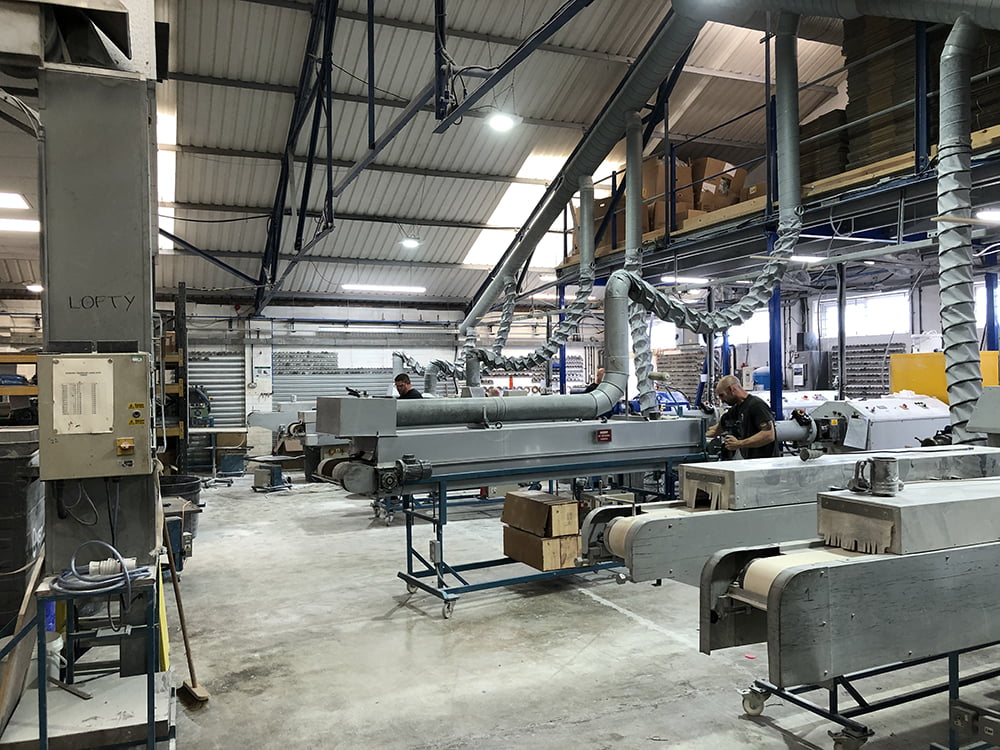Get high-quality, low-cost silicone press moulding products delivered to you by real experts. Our compression moulding process service is faster and more accurate than ever. Able to quickly produce all kinds of moulded silicone, from simple gaskets and O-rings, to more complex rubber parts.
At Viking Extrusions, we have over 30 years’ worth of experience making silicone press moulding products.
Compression moulding is one of the oldest and most reliable methods for making rubber parts. In fact, the technology has existed from the very beginnings of rubber manufacturing.
The compression moulding process involves placing uncured rubber in between two halves of a heated mould tool. The mould is closed inside a press under pressure. The silicone rubber is cured via heat conducted from the surface of the mould tool, solidifying it to the shape of the cavity.
Commonly manufactured, our compression moulding products range includes gaskets, O-rings, and more.
Compression moulding advantages and disadvantages. Compression moulding has many advantages over LSR injection moulding, such as:
There are sometimes circumstances where the compression moulding machine is not always the best way to create your mould. For example, compression moulding is:
Prototyping
Compression moulding has a lower tooling cost in comparison to injection moulding. Making it suitable for prototyping parts.
(Please also note: for very small production runs where parts are required urgently, Viking Extrusions can produce parts via a newly developed 3D printing process. To learn more, visit our Silicone 3D printing page.)
Small to medium production runs
Compression moulding is most commonly used for production runs where the quantities are from hundreds to several thousand. Larger production runs can make use of multi-cavity moulded, allowing several components to be produced in a single cycle. For production runs in the many thousands, LSR injection moulding may be a more suitable alternative.
HCR grades of silicone rubber used for compression moulding are capable of operating in extreme high and low temperature environments. Industries that use compression moulded silicone rubber products include:
Compression moulding is the process of pressing a piece of uncured rubber between two heated tools into a mould. The rubber is then cured as heat is conducted from the surface of the mould tools. The compression moulding process is one of the oldest methods of making rubber parts.
Compression moulding is commonly sought after by product development engineers looking for cost-effective metal replacement applications. The swapping out of metal for silicone is very common in manufacturing automotive parts, for example. Press moulded silicone parts are also commonly requested for making intricate parts within hydraulic technology, thermoset plastics, fibre-composites, ceramics and more.
Both methods use heat and pressure to make moulds, but the way the material is inserted into the mould cavity is different. Compression moulding is a process defined by its use of compressing uncured rubber between two mould presses. Injection moulding is defined by its use of injection technology, as in a screw pulls material into a hopper. Both are convenient ways to make silicone moulds but depending on the type and volume quantity of the mould, one may be better than the other.
The design of any moulds must allow venting or ‘breathing’. That is for gas, air or steam to escape during the compression period. After initially applying the pressure, the usual practice of breathing is to open the mould slightly to allow any gases to escape.
Contact our expert team of silicone engineers for advice, quotations or any other queries.


Manufacturers of precision silicone rubber extrusions, mouldings and inflatable seals.

© Viking Extrusions. All Rights Reserved.
Designed by Damteq.
Close
We ship our goods worldwide using a variety of couriers including DPD, DHL, TNT, UPS and FEDEX. Please contact us to discuss your shipping requirements.
Close
We ship our goods worldwide using a variety of couriers including DPD, DHL, TNT, UPS and FEDEX. Please contact us to discuss your shipping requirements.